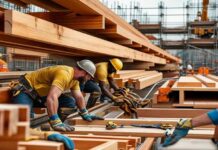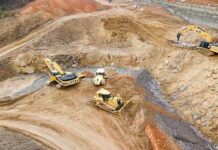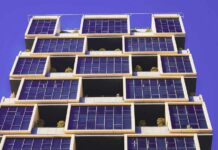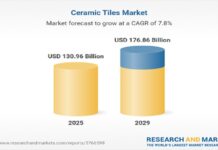Top 10 Sustainable Building Materials Transforming UK Construction
The UK construction industry undergoes substantial transformation due to the growing emphasis on sustainable building practices. The construction industry now sees builders, architects and policymakers place top priority on sustainable building materials to cut carbon emissions while boosting energy efficiency. Traditional building materials such as concrete and steel generate substantial carbon emissions which highlights the urgent need for sustainable alternatives. The UK leads towards an environmentally sustainable future through the use of innovative materials that preserve both durability and cost-efficiency along with structural strength.
Cross-Laminated Timber or CLT stands out as one of the top sustainable building materials available. The engineered wood product consists of timber panels arranged in alternating directions which results in a material that is both strong and lightweight. CLT becomes carbon-negative when trees are sustainably sourced because they absorb carbon dioxide during growth. The prefabricated construction method of Cross-Laminated Timber shortens building time frames while decreasing energy consumption and minimizing material waste at construction sites. The UK sees growing use of CLT in residential, commercial, and high-rise buildings due to its structural strength and fire resistance especially in modular construction projects.
Hempcrete represents a groundbreaking solution in sustainable building methods. A combination of hemp fibers with lime and water creates this bio-composite material which serves as an environmentally-friendly substitute for concrete. Traditional cement produces substantial carbon emissions during its creation process while hempcrete functions to capture CO₂ throughout the growth period of the hemp plant. This material offers superior thermal insulation to maintain stable indoor temperatures naturally while preventing mold and moisture accumulation. Hempcrete has become a popular choice for constructing walls and insulation in sustainable homes throughout the UK because of its non-load-bearing properties and effectiveness in regions with changing climates.
Recycled steel has become a vital element in promoting sustainable construction practices. Creating new steel needs extensive energy input and results in major emissions; however recycled steel reduces energy consumption by 75% yet remains equally strong and durable. Construction companies decrease landfill waste and environmental harm when they use scrap metal for new projects. Skyscrapers and bridges as well as prefabricated homes use recycled steel which becomes increasingly popular as builders seek sustainable materials.
The popularity of Bamboo as a sustainable building material continues to rise. Bamboo matures much more quickly than traditional hardwood and absorbs higher amounts of CO₂ compared to most trees. The combination of its incredible strength and flexibility makes bamboo a dependable replacement for standard wood in structural components as well as wall and floor installations. Bamboo does not grow naturally in the UK but sustainably sourced bamboo has become more common in modular construction and low-carbon building methods. The natural resistance to pests and decay found in bamboo minimizes chemical treatment requirements and enhances its environmental sustainability.
Straw Bales represent a creative solution for repurposing agricultural waste in green building practices. The use of straw for home insulation prevents air pollution that would otherwise result from burning it. Properly compressed straw bale walls deliver excellent insulation characteristics which minimize heating and cooling expenses while also providing natural fire resistance. Builders in the UK use this compostable substance extensively in passive house designs and sustainable rural developments because correctly maintained structures built with this material can endure for over a hundred years.
The construction practice of Rammed Earth originates from ancient times but now experiences renewed popularity in contemporary sustainable building methods. The construction method involves compressing soil and clay with water to form sturdy walls without using materials that generate high carbon emissions. Rammed earth buildings function as energy-efficient structures thanks to their thermal mass properties which maintain warm interiors during winter months and cool interiors throughout summer. By utilizing materials from nearby sources rammed earth construction minimizes transportation emissions which appeals to environmentally-minded UK builders.
Mycelium Composites represent an innovative material developed from fungal root systems. Mycelium develops in nature to combine organic matter which results in building materials that are both lightweight and strong. These biodegradable and non-toxic composites require minimal energy for production which positions them as superior alternatives to conventional insulation and acoustic panels. The integration of mycelium-based materials into UK green building designs is advancing alongside the rise of sustainable construction awareness.
Recycled Plastic emerges as a transformative material in sustainable construction practices. When companies transform plastic waste into strong waterproof building materials they help decrease landfill overflow and ocean pollution. Builders can employ recycled plastic in insulation solutions and brick construction while minimizing environmental harm because of its durable performance characteristics. The ability of this material to resist both moisture and pests makes it highly beneficial for sustainable construction projects.
UK construction projects increasingly utilize Cork as an eco-friendly building material. Cork oak trees provide a highly renewable resource because the bark is harvested without causing damage to the trees. The material excels at insulation because it absorbs sound while keeping indoor temperatures stable. The fire and water resistance properties of cork make it suitable for use in flooring materials and wall and ceiling insulation. This material can be recycled or composted at its end-of-life stage which helps decrease construction waste.
Ferrock stands out as an innovative concrete substitute through its composition of recycled steel dust and silica. Ferrock differentiates itself from cement production by absorbing carbon dioxide during its hardening process which results in a carbon-negative building material. The material exceeds conventional concrete performance by offering superior resistance to cracking and stress. The use of industrial waste for raw material production allows Ferrock to decrease landfill waste while delivering strong flooring and structural solutions for sustainable building initiatives.
The transition to net-zero emissions by 2050 in the UK makes sustainable building materials increasingly vital. Sustainable materials replacement in construction represents one of the best strategies to lower environmental impact because the construction sector generates much of the nation’s carbon emissions. Builders and developers focus more on sustainable construction to comply with tougher regulations and address the increasing consumer interest in green buildings.
Switching to sustainable materials generates economic advantages. These materials provide better insulation which leads to decreased energy expenses for both heating and cooling systems. Construction timelines accelerate with CLT and prefabricated components which reduce both labor costs and waste. The advancement of green technology will result in the development of new materials and construction techniques which provide sustainable construction solutions that are both more efficient and affordable.
Government incentives and policies serve as critical drivers for the widespread adoption of eco-friendly materials. Builders receive motivation from programs offering tax incentives and grants to adopt green practices in their projects. UK cities are implementing tougher building regulations to ensure that new developments comply with sustainability standards. Investment and innovation in sustainable construction are increasing as the UK advances toward greener infrastructure which establishes the nation as a frontrunner in sustainable building methodologies.
Building sustainability as the construction industry standard requires widespread adoption of eco-friendly building materials to help reach this future objective. The widespread availability and reduced cost of new materials will make sustainable construction standard practice instead of an occasional choice. When builders and developers select materials that minimize emissions and boost energy efficiency while contributing to a circular economy, they advance the development of a sustainable built environment that benefits both the planet and human well-being. The UK demonstrates substantial advancements in sustainable building materials while persistent investment will secure lasting environmental and economic gains for future generations.




























